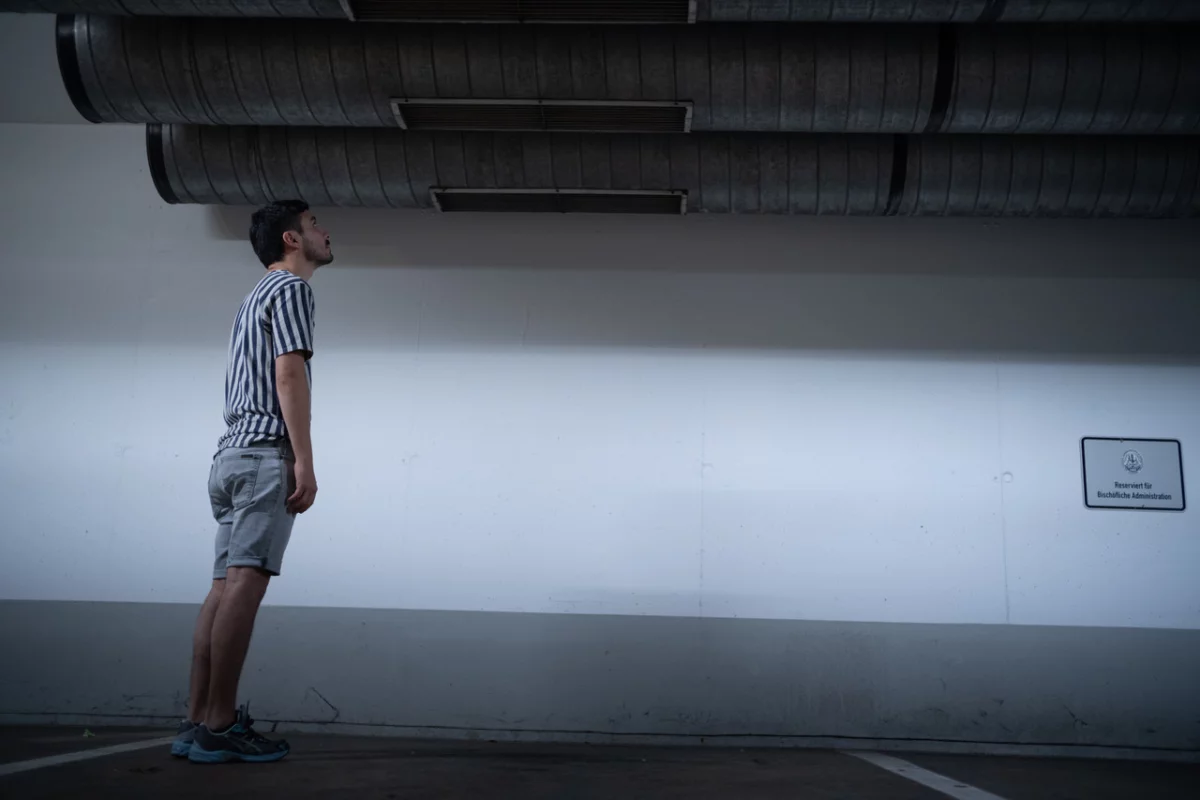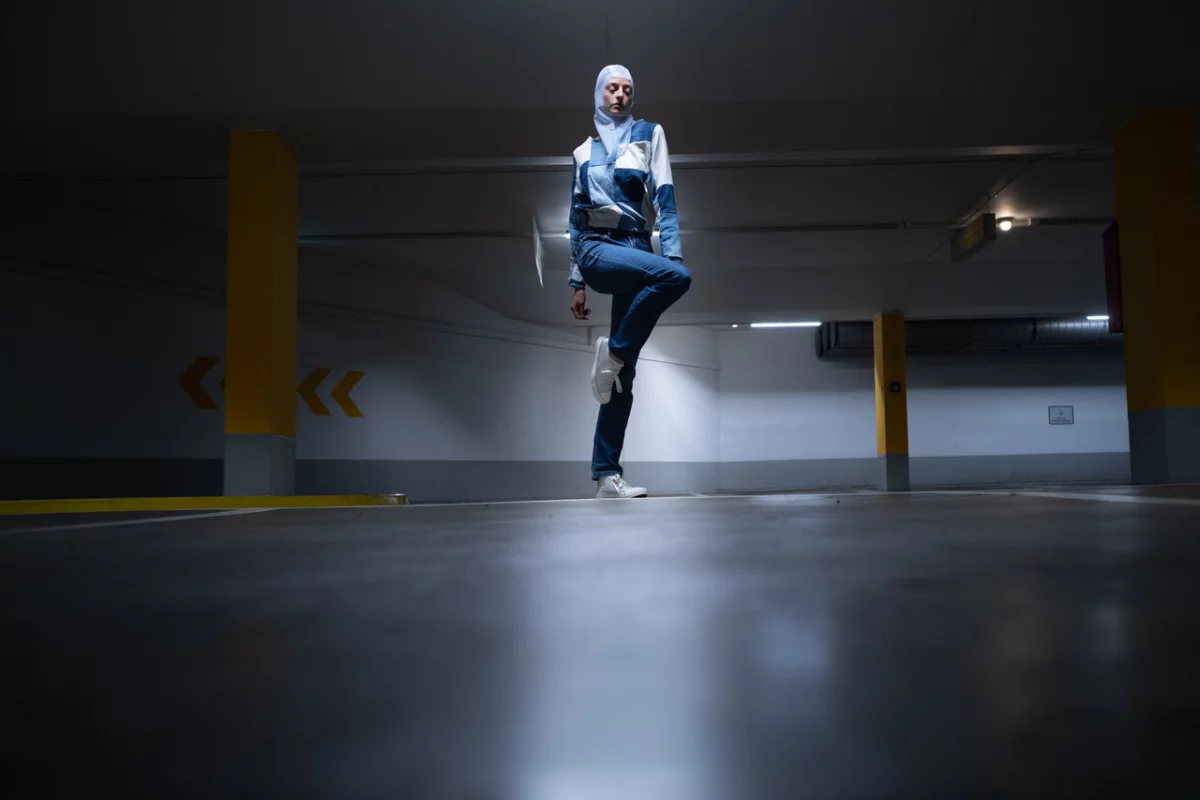What do Mary`s Miracles sound like?
By Elena Philipp
Culture despite the Crisis (Episode 7): In their performance-based installation "Wunder" (Miracle) about Altötting's Black Madonna, Christiane Huber and her team bring together religious rituals and current discourses.
Miracles work. For some, miracles heal the body and soul; for others they fill up the coffers. The Wittelsbach rulers in Bavaria would regularly schedule a new miracle from Altötting’s Black Madonna whenever the royal coffers became empty and pilgrims were needed as a source of income. As the artist Christiane Huber puts it: "If the coffers were empty, a miracle was needed." She was able to understand these historical processes, which twisted power, economy and religion, when she read Altötting’s books of miracles. In these records, for four centuries the church kept note of all the miracles that the Black Madonna is said to have performed.
Help from Maria – cases in the thousands
Christiane Huber tackled Bavarian mythology about Maria in preparation for her performance-based sound installation "Wunder" which, financed by the #TakeAction program, was shown in Altötting in mid-August 2021. As the second part of the project, her production "We Call Wonder" will premiere at the Theaterfestival Spielart in Munich in October. Christiane Huber reports enthusiastically on what she found in her research into the miracle books. The archives of the diocese of Passau provided them to her as an Excel list. The records cover a period from the 1390s, when the image of the Black Madonna was placed in Altötting, to the 1790s. "Maria hilf" or "Maria has helped" is the formula with which each of the thousands and thousands of entries begins.
"Maria has helped," Christiane Huber reads an example from a notebook — a thanksgiving for rescue during a storm: "Then suddenly a battle of the winds broke out, wagon and man were overturned and the stormy south wind hurtled across the earth with a stubborn whirl." Houses, stables, trees were destroyed by the storm, but when the desperate believer cried out, "O Mother of God of Oeting, save my body and my possessions" and promised to put an offering of a quarter of a pound of wax on the altar, the wind died down.
The connection to God described in the entries is direct. The examples from the plague period made Christiane Huber think of the corona pandemic – when an inexplicable disease rages, the faithful are left with prayer and hope. And, of course, gifts to the Mother of God: in 1536, for example, Martinus Stromair from the Weilheim area saved his nine sons, wife, servants and maids from contracting the plague by donating a pound of wax to the Black Madonna. This happened "At the intercession of Maria," according to the scribe. He adds: "The country people are heard more often and more quickly because they plead to heaven with greater faith." The books of miracles are an archive of the perils of pre-modern everyday life. A treasure trove for Christiane Huber and her colleagues.
 © Sven Zellner
© Sven Zellner
Blackened by candle smoke?
Christiane Huber is ‘by birth’ interested in the rich culture surrounding the Black Madonna: she grew up in the Altötting district. She studied psychology and trained as an actress at a private school. Later she completed a master's degree in fine art and sound art at Bard College in New York. In her projects, she brings together her local knowledge and an international perspective. Important as a starting point? "I have respect for traditions. To devalue religious rituals isn’t my concern," she says. "But you can shake people up a little bit."
In their study of the Black Madonna of Altötting, Christiane Huber and her team had three main questions: "What was the economic development of such a cult? Can religious symbolism be reinterpreted in feminist terms? And what does being Black mean today?" Controversial topics of theology were quickly addressed as well as current debates and discourses. To venerate a Black woman does not seem easy for some Catholics, one thinks, when listening to Christiane Huber talk about her research. In Altötting, the figure is addressed as the Mother of God, not as the Black Madonna. And the church there argues that candle smoke has blackened the face of the originally white wooden figure. Ethnologists and church historians with whom Christiane Huber spoke also mention other possible explanations: these images of Black Madonnas, which are widespread throughout Europe, can be traced back to ancient deities such as Isis. Perhaps experiences during the Crusades shaped the depictions? "Exoticism certainly plays a role," Huber summarizes the discussions. "At the same time, a particularly high level of miraculous activity is attributed to the Black Madonnas." A paradox that also shapes theological study of the Black Madonna. "Nigra sum, sed formosa," Christiane Huber quotes from the Song of Solomon. "Would that translate as 'I am black but beautiful' or 'I am black and beautiful'?"
Artistically, these debates are productive: "I think it’s interesting that there are so many contradictions and that so many explanatory models exist side by side. I want to deal with this complexity," says Huber, explaining her approach. All the found objects and theories that she and her collaborators came across during the preparations – but also discourses on racism, diversity, queerness and free associations with the Black Madonna – flow into the performance-based sound installation in Altötting. Two days before the Assumption of the Virgin Mary (Maria), there was a four-hour durational performance on August 13, 2021 – in the underground parking garage beneath the Chapel of Mercy.
 © Sven Zellner
© Sven Zellner
The Echo of Miracles
"Originally, we had planned an artistic procession on the Kapellplatz," Christiane Huber tells us. "But on site we realized that it would be difficult to add something to the square." Altötting's Kapellplatz is itself an enactment: the surrounding architecture is imposing; next to the chapel are the Stiftskirche, the Kloster St. Magdalena (cloister), the Jesuit church and the town hall. "For the sound installation, we recorded the church bells of Altötting. I stood on the Kapellplatz, with a remote control, and was able to ring five different bells," Huber says. "When pilgrims arrive, it's supposed to be impressive." Those of the pilgrims who are not completely devoted to the religious experience are taken in by the inns and souvenir stands around the Chapel of Mercy. "To this day, a place of pilgrimage is good marketing," Huber says. And yet the community and the church are interested in a critical examination of religious rituals as well. "We got a lot of support, from the district administrator and the department of culture or pilgrimage office. Their only concern was that we might disturb the pilgrims," says Huber.
By moving to the underground parking garage, the project ultimately found its ideal space. "We needed distance from the Chapel of Mercy in order to artistically reflect the phenomenon of the Black Madonna. And we needed space for people to follow our performance in a concentrated way," Huber said. "The garage’s positioning means reverberation is intense. That fits with our theme, the reverberation of miracles." Sound is an essential component of the Altötting production. The soundscape was conceived by musician Michael Schmid, who, like Huber, is from the area but belongs to the international ensemble ICTUS in Brussels. He has divided his forty-minute composition into three parts, which are played in a loop: "When the people come in, the situation sounds paradisiacal; in the middle section, more mundane sounds predominate; the end has more of an apocalyptic end-of-time mood," Huber explains. Meanwhile, the seven performers interact with the stage set by sculptor Robert Keil, constantly moving like pilgrims. They speak from accompanying texts; for example, miracle tales from the books of miracles that were part of Christiane Huber's research. "And at the end, the bells of Altötting ring out."
After the audience has had this experience what would the ideal effect of Huber’s "miracle" be? Christiane Huber doesn't think about it for long: "For me, the performance is also related to the climate crisis and our end-of-life mood. Do we remain passive instead of being politically active and standing up for urgent issues? Are we, like the faithful, also hoping for a miracle?" May the performance – one thinks in light of the current, catastrophic climate news – shake things up.
In the series "Kunst trotz(t) Krise" (Art despite the Crisis), cultural journalists Elena Philipp and Georg Kasch take a look behind the scenes of funded projects on behalf of the Fonds Darstellende Künste. What is the impact of the Fund's #TakeThat funding as part of the NEUSTART KULTUR program of the Federal Government Commissioner for Culture and Media?